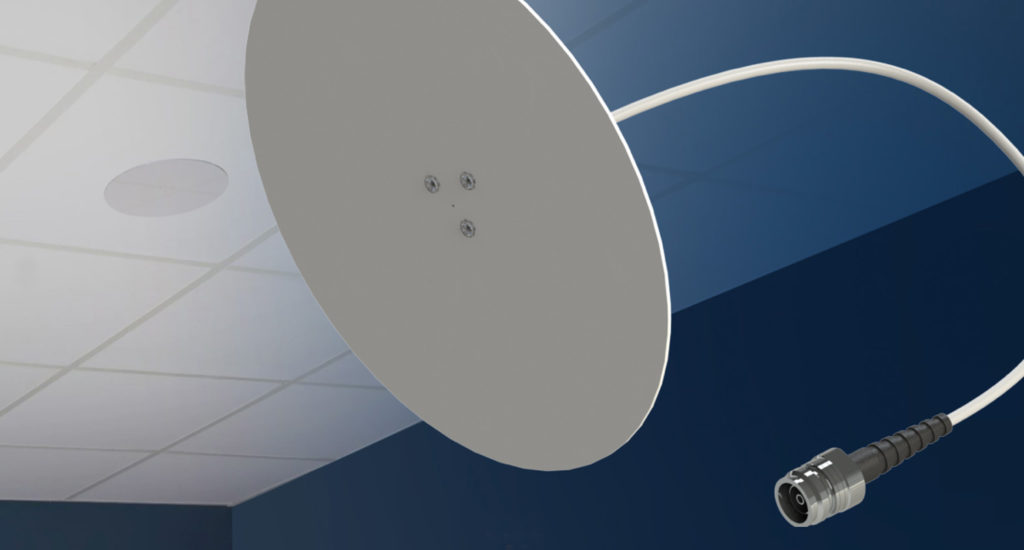By Leighton Carroll CEO, Galtronics and Sadegh Farzaneh, PhD, CTO, Galtronics
Demand growth for wireless data requires higher throughput to accommodate an exponential growing number of users, devices and applications. Despite the slowdown in industry investments and balance sheet constraints, the challenge facing wireless operators to meet the need for capacity and coverage continues to intensify.
Operators must balance the increasing capacity requirements while concurrently managing costs. Innovative solutions play a key role in achieving these goals. Advanced antenna solutions provide an option to employ spectrum more efficiently within the same footprint with great RF performance. Added benefits include higher sectorisation, integrating multiple frequency bands in a single antenna and better energy efficiency.
Density of users in city centres, concerts, stadiums and airports poses significant challenges in meeting the massive capacity and throughput requirement. Efficient cost-effective spectrum utilisation is critical to solving this issue. Legacy densification approaches such as in filling with macro locations and adding small cells can struggle to deliver expected capacity and throughput in dense usage environments and have been historically expensive and time consuming.
Advanced antennas, such as Massive-MIMO and Multibeam technologies, have become the standard solutions for high-capacity applications. Each has unique applicability based on carrier frequency bands and the amount of coverage, capacity and throughput needed for a given use case.
MASSIVE-MIMO AND BEAMFORMING
Massive-MIMO is an integral part of 5G and future wireless generations. Massive-MIMO antennas use an antenna array to add beamforming with signal quality improvements to enhance capacity and user experience. In city centres, where there are potentially RF reflections from beams, Massive-MIMO antennas are particularly adept at managing interference while delivering a quality experience. And larger Massive-MIMO antennas provide beam forming in horizontal and vertical planes, which is important in some metropolitan areas.
Massive-MIMO typically does not cover frequency-division duplex (FDD) frequencies, making this solution unavailable in several existing spectrum bands. Additionally, in denser environments, the power consumption levels can be higher than traditional antennas to drive beamforming. All technology has limitations, and even an integrated 64T64R 5G Massive-MIMO antenna can saturate under dense traffic loads while consuming significant energy.
MULTIBEAMS
Multibeam antennas are high-capacity alternatives with a single antenna generating multiple beams in different directions, dividing a given coverage area into multiple, smaller sectors to enable better capacity and throughput.
Multibeam antennas are time-division duplexing (TDD)/FDD and 4G/5G agnostic. With these antennas, carriers with significant subscribers and spectrum-supporting LTE can leverage this technology to improve LTE throughput, which would have been unavailable until they deployed a new 5G Massive-MIMO solution. When carriers choose to migrate a spectrum band from 4G to 5G, a simple radio change-out will deliver the benefits of 5G on the existing footprint.
Multibeams have been around for years, but the only technology that historically worked well without interbeam interference were lens antennas. Unfortunately, these globes are large, heavy and expensive. Recent innovations have allowed the creation of multibeam antennas in a panel form factor that works like a lens antenna. This means that panel multibeams now solve for both capacity and high data speeds, and they weigh and cost less.
USE CASES AND SPECTRUM MATTERS
Integrated Massive-MIMO antennas such as the 64T64R have great features and provide digitally controlled beams that change based on the individual user and their location. Conversely, Multibeam antenna patterns have static horizontal beams and often rely on traditional remote electronic tilt (RET) for changing the elevation.
Which technology is better? It depends on the capacity needs, the frequency band, and what use case they are trying to solve.

TIER-ONE CARRIER 5G EXAMPLE
Recently, a tier-one North American carrier ran head-to-head 5G high traffic trials using C-Band to compare one of our multibeam antennas coupled with 4T4R radios against a major OEM’s 64T64R Massive-MIMO antenna. As the number of users increased, the 64T64R performance degraded linearly, whereas there was substantially lower degradation and higher capacity with the Multibeam solution.
The trial results showed a six-beam multibeam antenna:
- provided over twice the capacity
- delivered over 200 per cent faster downlink throughput
- saw over 20 per cent faster uplink throughput
The trials occurred at two separate outdoor venues with large crowds – one for a large festival and the other for an F1 Grand Prix. While the results are insightful, they may not be replicated in every use case.
INTEGRATED M-MIMO ANTENNAS
M-MIMO is differentiated in that it can create a larger number of directionally specific beams with higher overlap between beams. As user density increases, this overlap can become more problematic, reaching the point where the advantages begin to degrade. In urban scenarios, this trade off works as the beams provide excellent coverage with reasonable efficiency. As the numbers of users increase, even a 64T64R can saturate, losing its advantages in driving a quality experience.
CARRIER SPECTRUM
Most M-MIMO solutions only cover TDD bands. Carriers have low band, mid-band, and even millimeter wave spectrums. When carriers want to handle increased capacity in a FDD band (regardless of 4G or 5G), Multibeam antennas allow carriers to have multiple beams, which increase the capacity of a single site regardless of the chosen spectrum. One Multibeam can cover both TDD and FDD bands, and 4G and 5G in a single antenna – regardless of the “G”. In a 5G application, when paired with a 4T4R or 8T8R radio, Multibeams also handle multipath, meaning RF reflectiveness.
SOLUTIONS
M-MIMO and panel-based Multibeam antennas are the best solutions for high-traffic utilization. Both have performance advantages in different use cases. Ultimately, spectrum efficiency is critical for carriers to meet customers’ ravenous demand for seamless connectivity. Specific use cases, ongoing operational costs, and spectrum availability matter when making the best decision to deliver high data speeds in dense traffic environments, regardless of the “G”.
- Originally published in Mobile World Daily.








